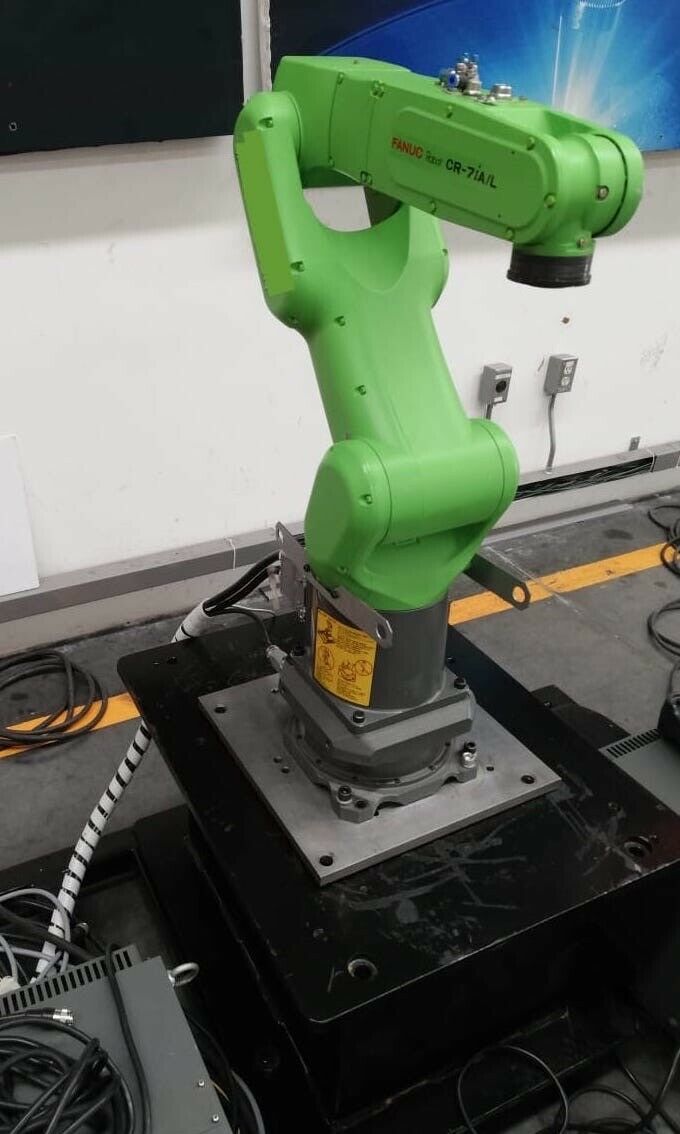One of the most common myths about industrial robots is that they eliminate jobs from workers. While it is true, they can replace people in monotonous and dangerous jobs, they do not completely eliminate humans from the workforce. The implementation of robots actually creates many new job opportunities for workers. This is especially true with the latest robotic trend, cobots.
Unlike traditional industrial robots, collaborative robots are designed with special safety features that allow them to operate around humans without safety barriers. The FANUC CR-7ia features force sensors, rounded edges, and a rubber exterior for safe operation. Instead of replacing humans, cobots are designed to work together with humans on manufacturing processes. Cobots add to the workforce, helping to relieve workers of repetitive, dull tasks so they can focus on more critical processes that provide more value to their company. Cobots and humans can work efficiently together, potentially boosting productivity rates by 85%. When companies implement cobots it is a positive for their employees as a Universal UR5 can ease an employee’s workload.
The implementation of cobots can boost domestic manufacturing, in turn creating jobs. Many companies have outsourced their manufacturing oversees due to high labor costs and skilled labor shortages. Cobot automation can solve both of these issues, allowing companies to bring their manufacturing back to the U.S. Collaborative robots are affordable to implement, easy to program, and are extremely accurate. Their productivity, product quality, and low costs make manufacturing domestically with robots cost-effective. New job opportunities can be created through the development of new manufacturing facilities such as supervisors, managers, floor workers, and cobot programmers.
While cobots help maintain and create manufacturing jobs, they also create several jobs in relation to designing, building, and maintaining them. With the increasing demand for cobot automation comes the increased demand for those to design them. Robotic engineers are in high demand, especially with collaborative robot development. More robotic manufacturers are looking to produce cobots and therefore will need robotic engineers. The demand for robotic engineers will only continue to increase as cobot automation grows each year.
Other jobs being created through cobots are those related to building the actual robotic systems. These include electrical designers, programmers, and mechanical engineers. Cobots are sophisticated machines requiring highly skilled people to help build them. Without these jobs there would not be the Universal UR10 or the FANUC CR-35ia.
In addition to those responsible for creating and building collaborative robots, there is also a demand for people to maintain them. Robotic technicians can help implement, maintain, or troubleshoot cobots. All types of robots require routine maintenance and a robot tech can assist with this. There also may be times when a cobot breaks down or is not functioning properly. In either scenario a robot technician will required to get it up and running again.
As the use of collaborative robots grows so do the job opportunities for people. Cobots are evolving the job market and the labor force. The implementation of cobots is moving the workforce into more desirable, higher value jobs. These jobs are more challenging, better paying, and overall more satisfying for workers.
Robots Done Right |
Used Robot Sales |
How Cobots are Creating Jobs

Robots Done Right is the place to start when it comes to used robots. Contact us if you are interested in buying or selling your used robot.